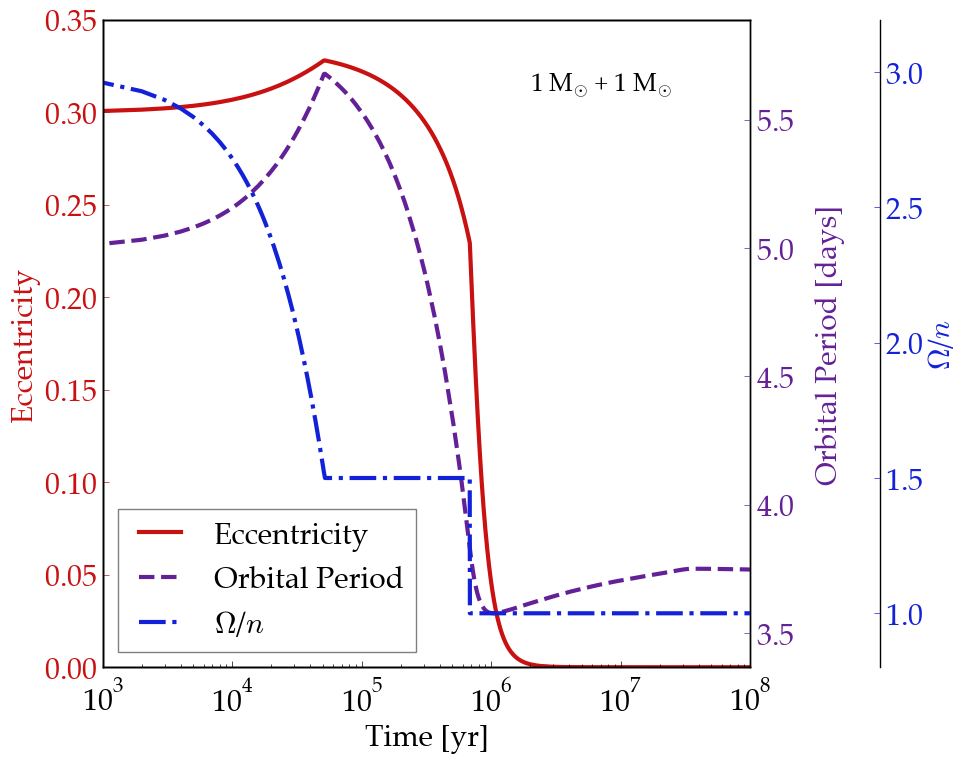Evolution of Tight Stellar Binaries
Overview
Orbital circularization of short-period binary stars due to radial contraction on the pre-main sequence and tidal torques.
Date |
07/25/18 |
Author |
David Fleming |
Modules |
EqTide STELLAR |
Approx. runtime |
71 seconds |
As stars form they contract onto the main sequence, and those in binary star systems can also experience tidal torques on the rotation and orbit. As tidal torques scale with stellar radius to the 5th power, the torques can be very strong early on. This early tidal evolution circularizes binary star orbits for orbital periods less than ~8 days, which is observed Meibom & Mathieu (2005). This example reproduces Figure 1 of Zahn and Bouchet (1989) using EqTide and STELLAR.
To run this example
python makeplot.py <pdf | png>
Expected output

Coupled stellar and tidal evolution of a solar twin binary from the pre-main sequence onward as calculated with VPLanet’s EqTide and STELLAR modules. Orbital eccentricity evolution is given by the red solid line, the orbital period by the purple dashed line, and the ratio of stellar rotation rate to binary mean motion (Omega/n) evolution is given by the blue dot-dashed curve. The binary’s evolution is very similar to that of an identical system presented in Figure 1 of Zahn and Bouchet (1989).